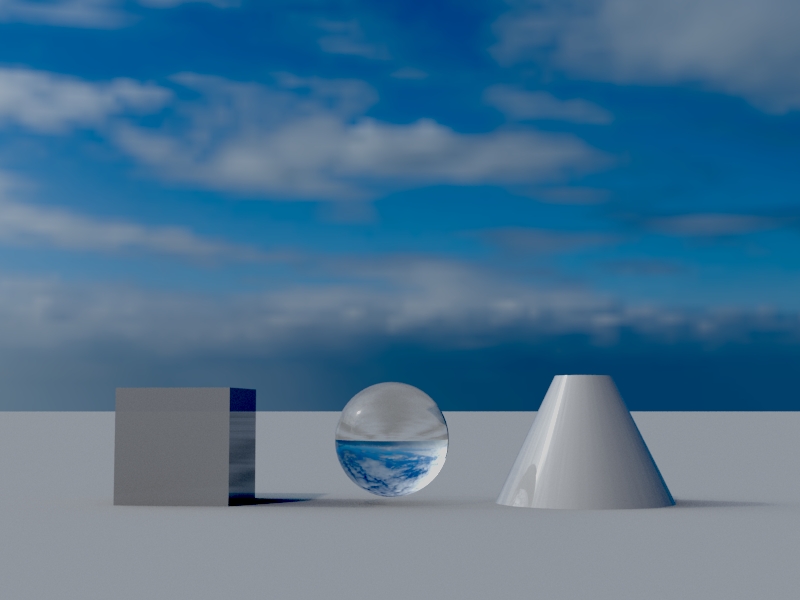COMPUTER
AIDED
ARCHITECTURAL DESIGN
Workshop 9
Notes,
Week of October 12, 2020
Environment
Settings, Sun, Sky, HDRI Images
There are a
number of options
availble for determining the the general atmosphere assocaited with
rendering, light and shadows studies. Some documentation
used to
develop this tutorial are published on line in the vV-Ray for Rhino
manual published on-line at:
https://docs.chaosgroup.com/display/VNFR/Lights
For more general on-line tutorials and reference materials on V-Ray see https://docs.chaosgroup.com/display/VNFR
PART 1. Caustics, Indirect Caustics and Materials.
1. Begin with 3 solid objects located on a V-Ray infinite plane and a V-Ray sun developed
in Rhino similar to the methods illustrated in tutorial 8. Change the perspective view to
an eye-level camera position so that the far edge of the infinite plane
is visible in the view as a horizon line.

2. Within the
V-Ray Asset Editor, go to the
"Environment" tab, select the checker-box icon adjacent to
"Reflection/refraction (background), and add a
"sky" as per the techniques used in workshop 6 . Set the
"Sky Model" to "Preetham et. al. and set "Turbity
to 2.0.
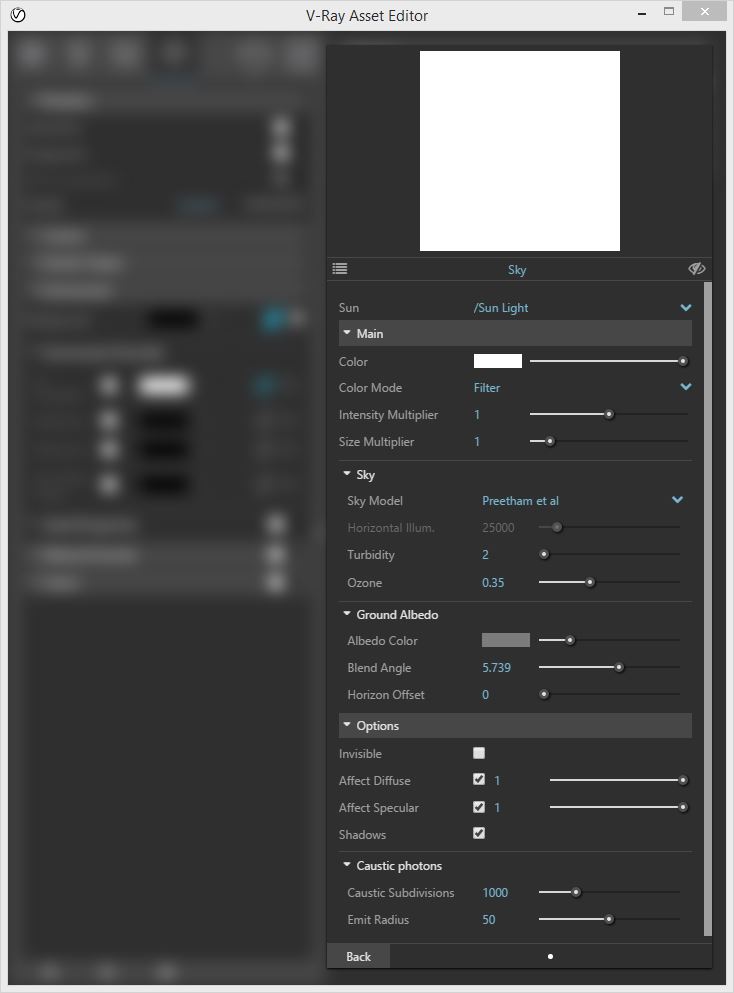
3. Do
a test rendering in V-Ray and use the "Levels" option in the V-Ray
frame buffer to adjust light balance.

4.
Now turn on the GI Skylight.
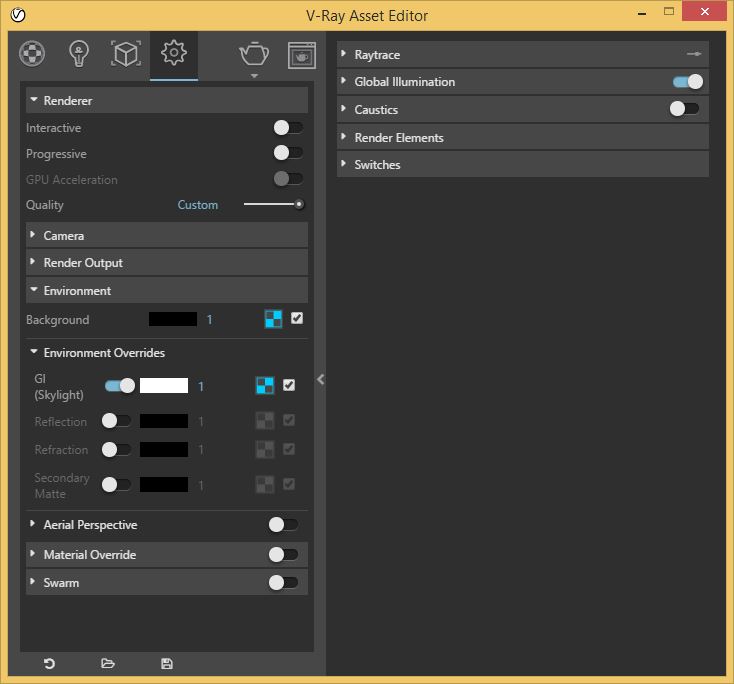
5.
Select the checker box and then select the Sky option with the Preetham
et. all. simlulation again similar to the method of workshop 6.
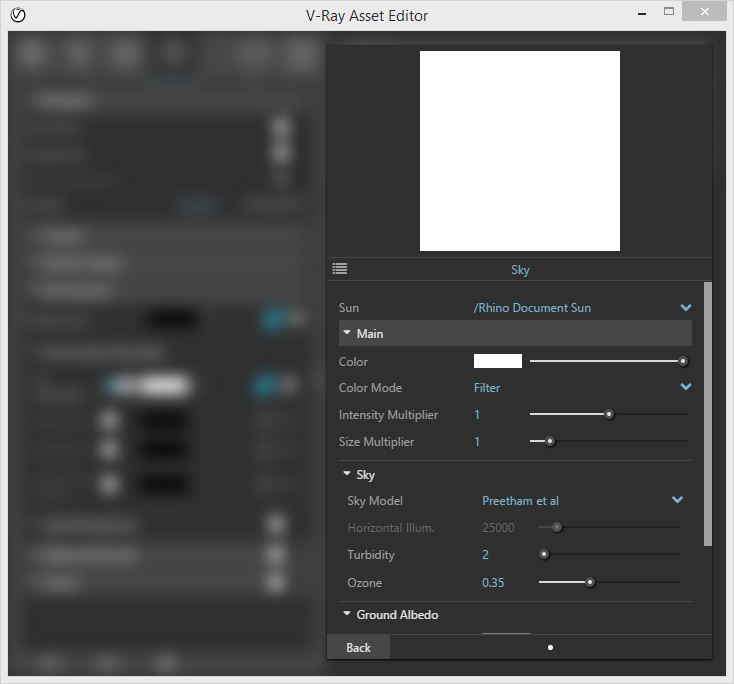
6.
Re-render the same view and note that the tone of the materials is a
little warmer.

7.
Now, similarly again to workshop 6, activate the switch on "Refection",
select the checker box, and add the Preetham et. al simulated Sun to it.
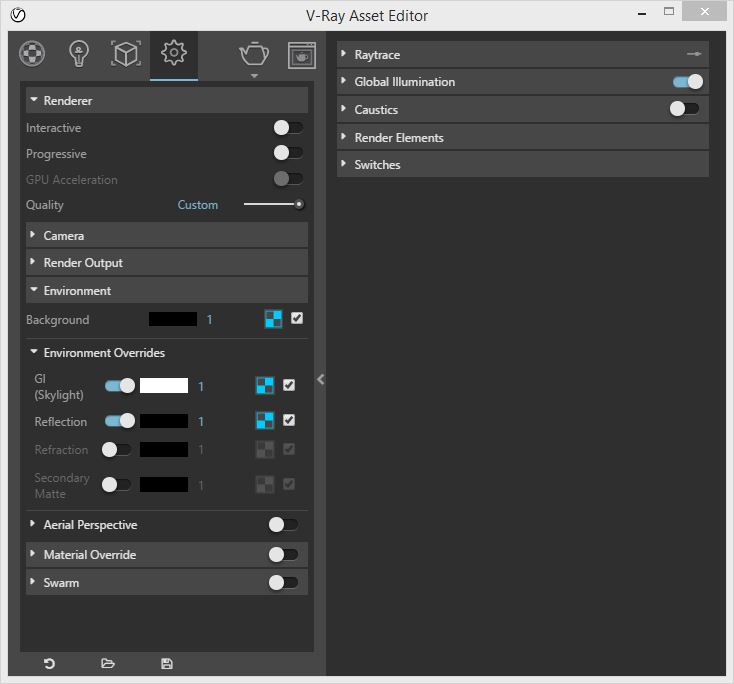
8.
Now create a neutral gray Generic material, name it "material_1" and
apply it to the objects and ground plane.

9.
Re-render the same view and note the higher contrast range of the
result.
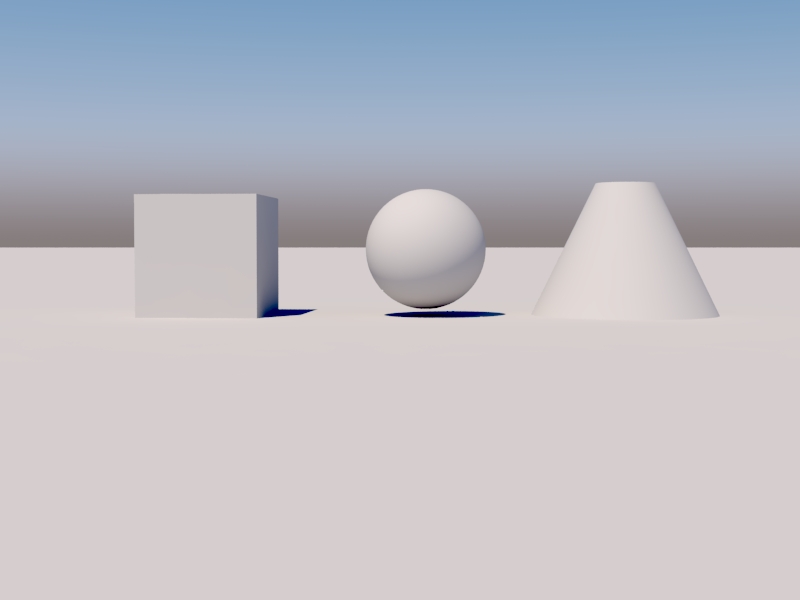
9. Now go to the "Caustics" tab, and select the check-box for
"Caustics" to turn caustics on.
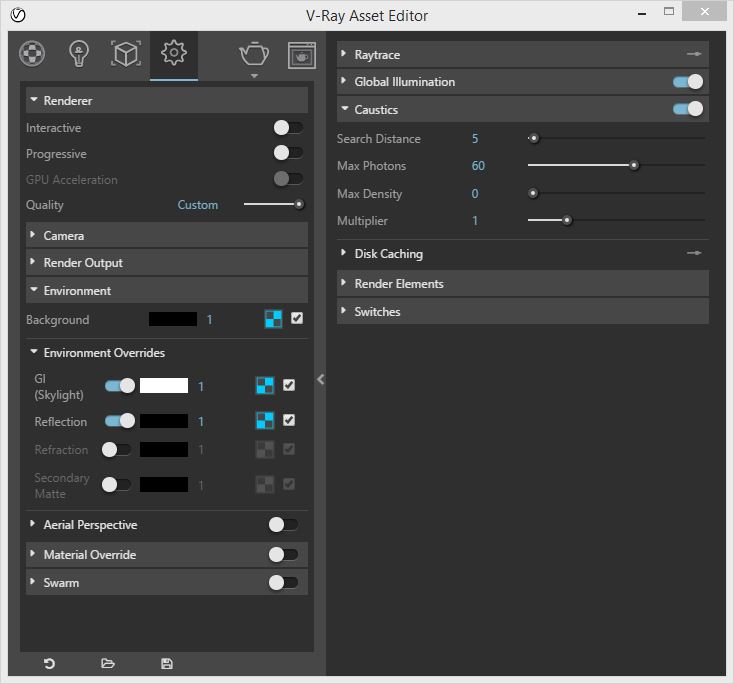
5.
Do another test rendering in V-Ray. Given the lack of transparent
surfaces there's very little difference if any between the two
renderings.

6.
However, with the V-Ray materials editor create a
light gray
"generic " material named "reflection_1". Set the reflection color to
white and and apply it to the three solid objects.
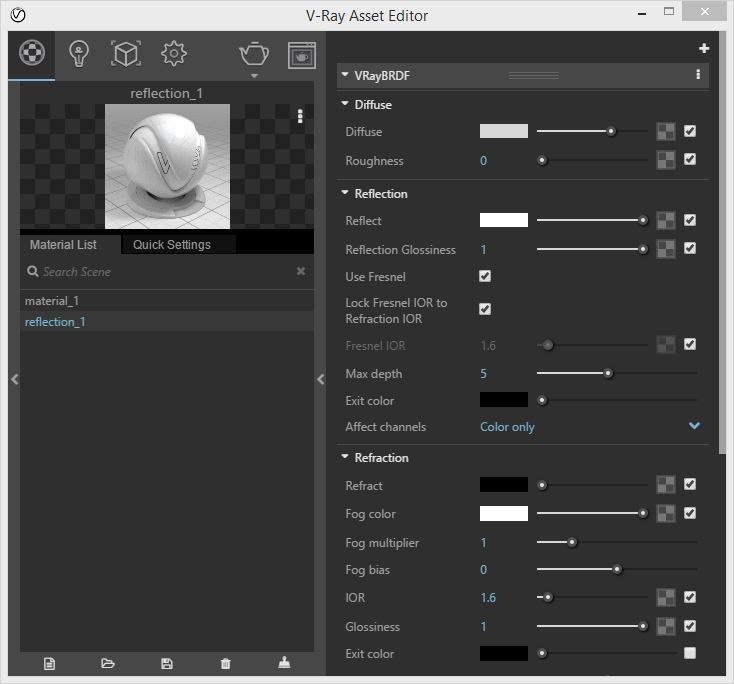
7.
Re-render the same perspective view with caustics on and note the basic
similarity in terms of the overall lighting and the casted shadows to
the earlier renderings but for the less flat appearance of the solid
objects with a subtle hint of blue on the edge of the sphere and cone..

8.
Now, however, within the V-Ray Options dialog box, turn off
the "on" check-box for "GI (Skylight)" and
:Reflection"

9.
Re-render the image and note the higher contrast in comparison
to the image under step 7. Here, the overall rendering appears
warmer and the contrast range is about the same. The contribution of
the Sky illumination has been lowered and the proportion of direct sun
color temperature to color appears to have been increased.
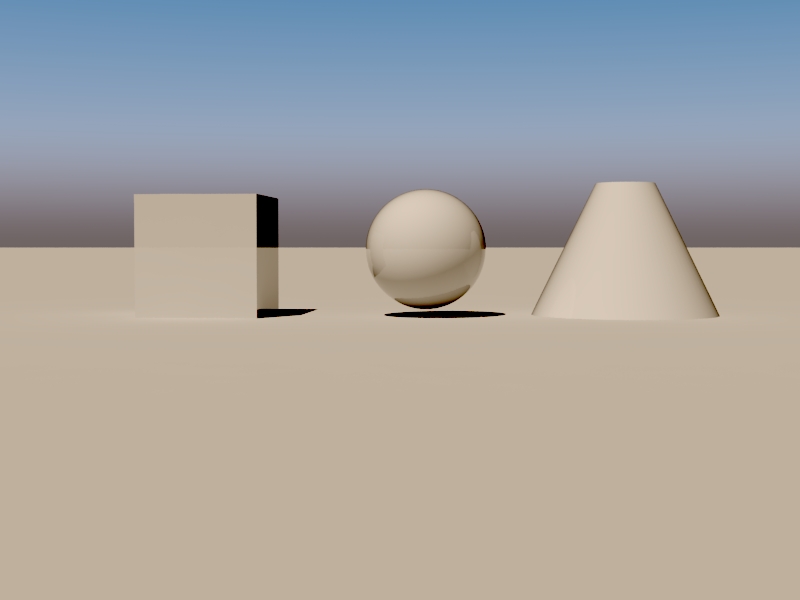
10. Turn back on the
check boxes for "GI (Skylight)" and" Reflection", but also turn on the
option for "Ambient Occlusion" on the right under "Global Ilumination"
in the dialog box below.
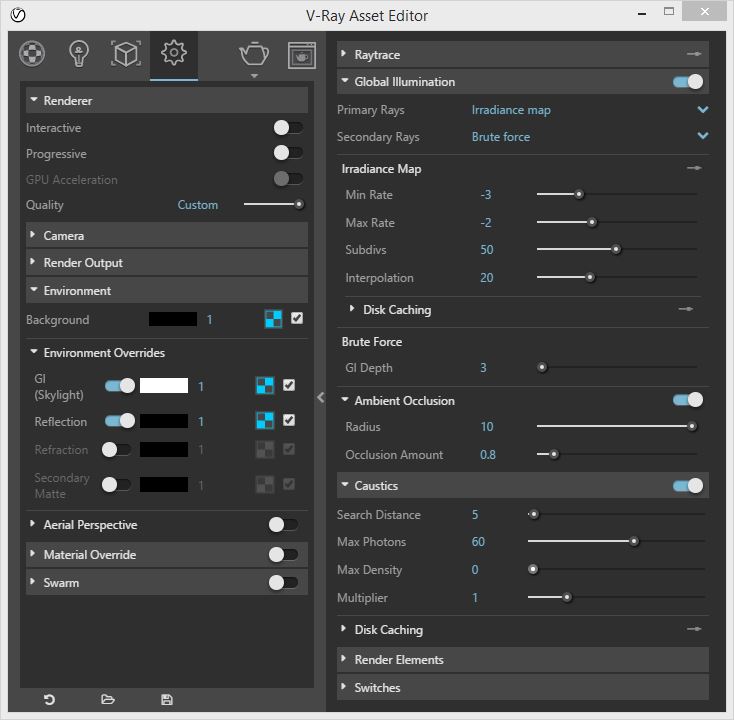
11.
Re-render and note the higher contrast range on the sphere
comparison with the images under steps 7 and 11. The overall impact
appears to be slighlty softer and more diffuse. with still a hint of
warm sun color temperature.
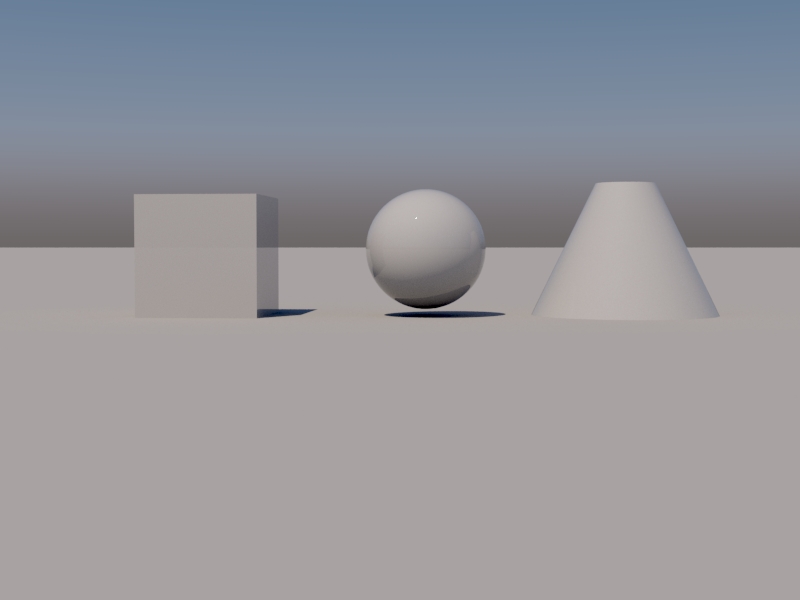
12.
Create a V-Ray material named "glass_2" with a light-gray
color for diffuse
color, reflection color, refraction color and fog,
per the techniques explored
in workshop 7.

13. Apply "glass_1" to the sphere and re-render
with "GI (Skylight)" and "Reflection"
switched to off.
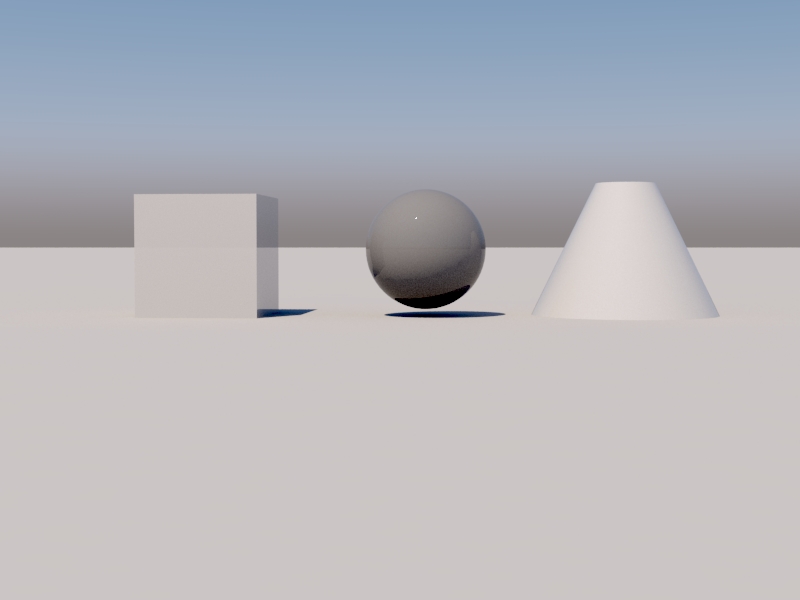
14. Switch back on"GI (Skylight)" and
"Reflection" and render again The rendering as a whole
appears less
flat. Note for example the greater difference in contrast between the
shadows cast by the box and those cast by the sphere, and notice too
the slighlty improved sharpness of the relflection on the cube and on
the sphere
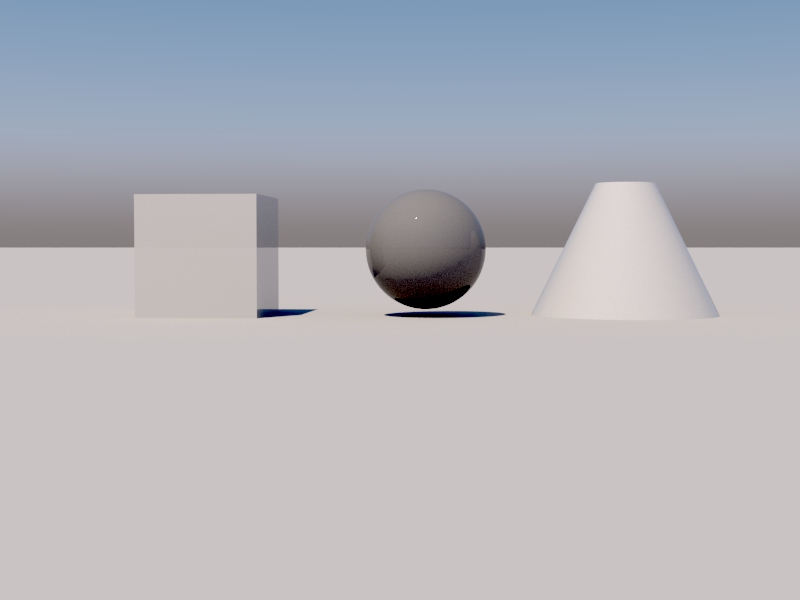
15.
Change the fog and reflection colors of "glass_1"
to white and re-render.

Note that appart from the transparency of the sphere the overall
intereflection of light is significantly changed.
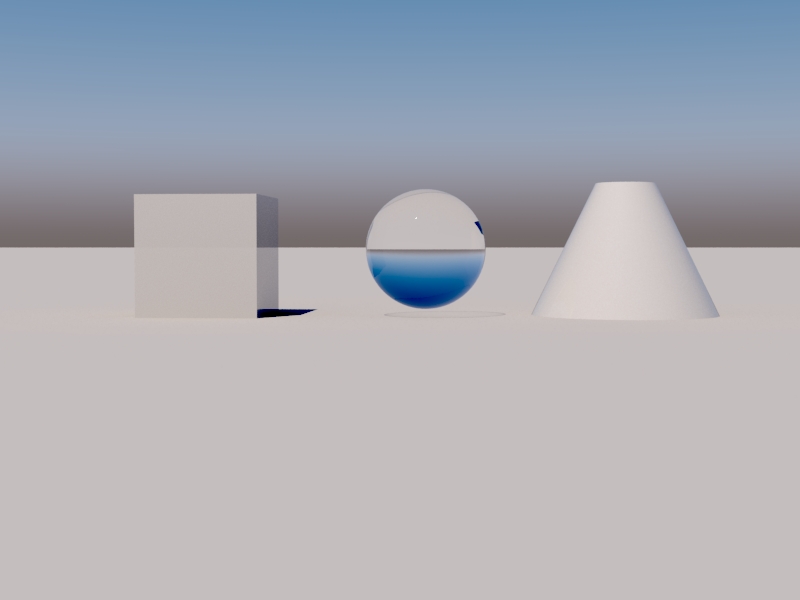
16. Within the V-Ray option editor, go to the "Environment" tab, set
the GI (Skylight) color to yellow, change the intensity to 4.0
and switch of the check-box for the Preetham et. al. simulatio on the
right.
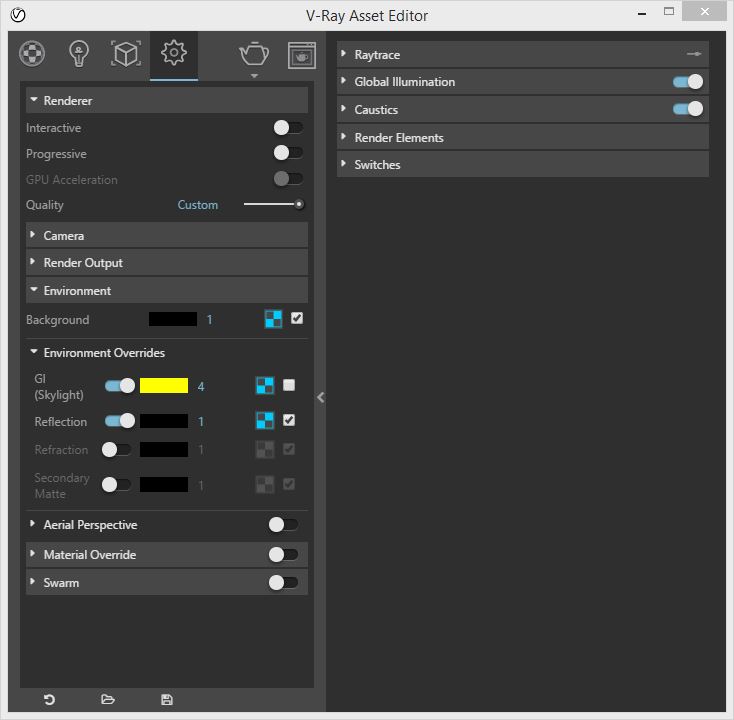
15. Re-render the image for a more distincly yellow tint to the overall
rendering of surfaces.
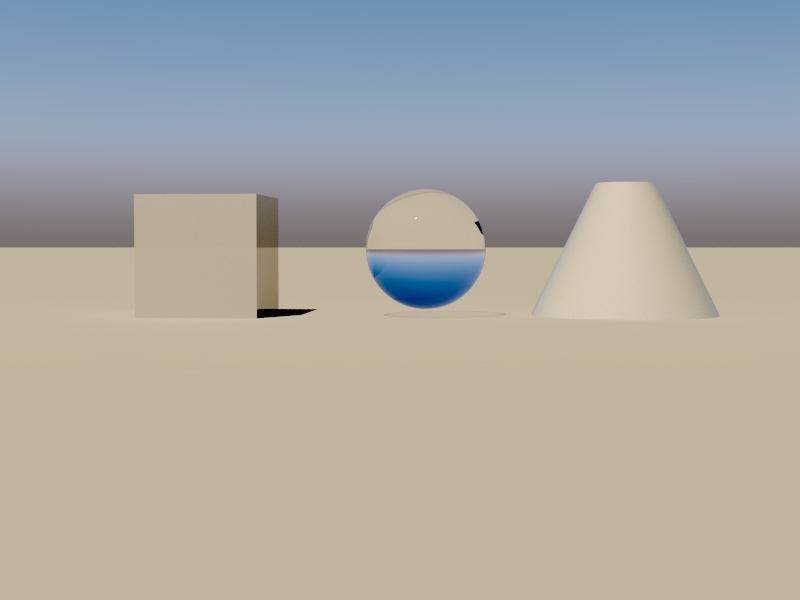
Part II. Exploring texSky properties.
1. Return to the "Background", "GI(Skylight)" and "Background"
skies, and reset the "Sky Model" to "CIE
Clear".
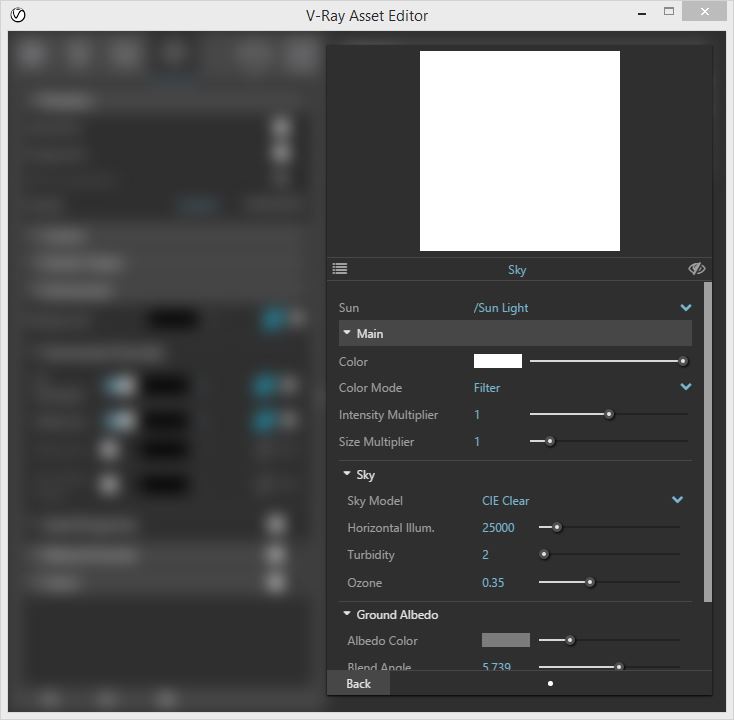
2.
Set
the color of the "GI (skylight)" back to the color
black at inensity of 1. Re-render and note the
difference with the last rendering of Part
1 with respect to the more solid blue color and less
diffuse appearance of the background sky.
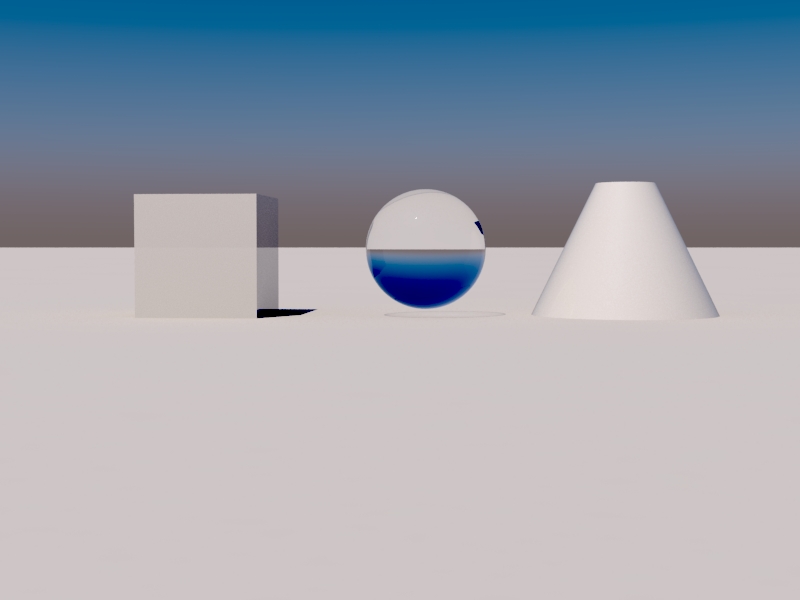
3. Within the "Environment" tab, change the colors of
the "Background", "GI (skylight)" and "Reflection" to dark gray at intensity 2.
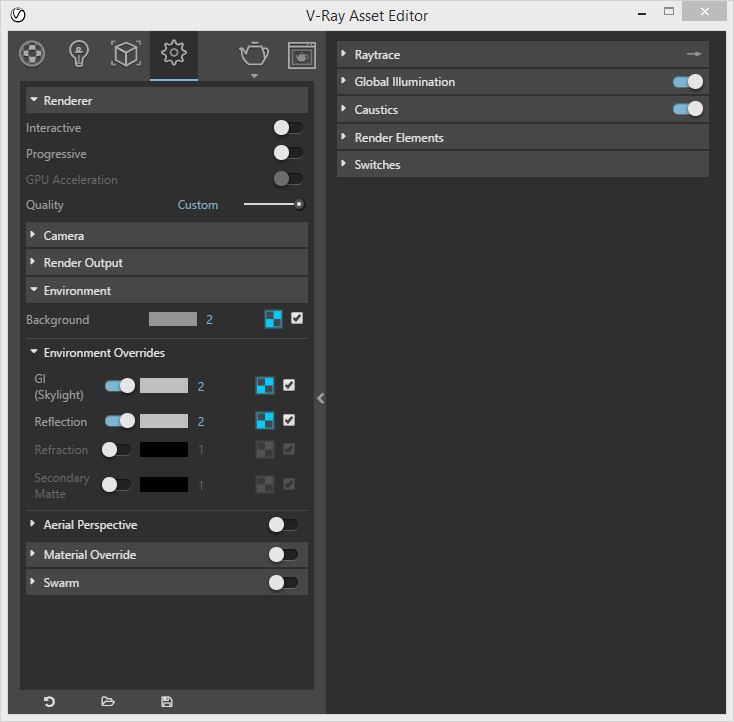
Return to
the properties of the"GI
(skylight)"
sky and modify the following properties:
Water Vaper = 4.0
Turbidity = 4.0.
Ozone = 0.55
This automatically adjusts the properties for "Background" and "Reflection" tp
the same values.
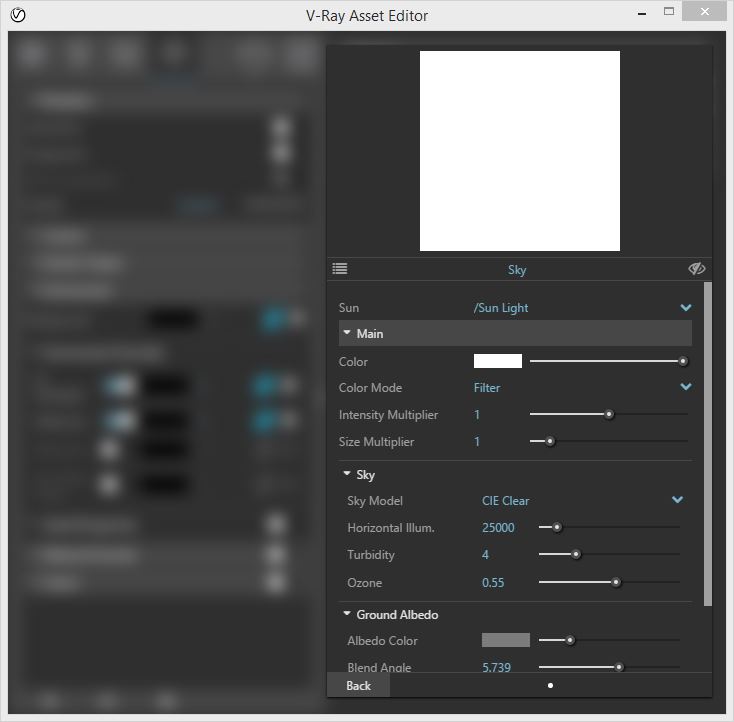
4. Re-render the model and the result is diffuse but a flatter we
obtained with the Preetham sky at the end of part 1.
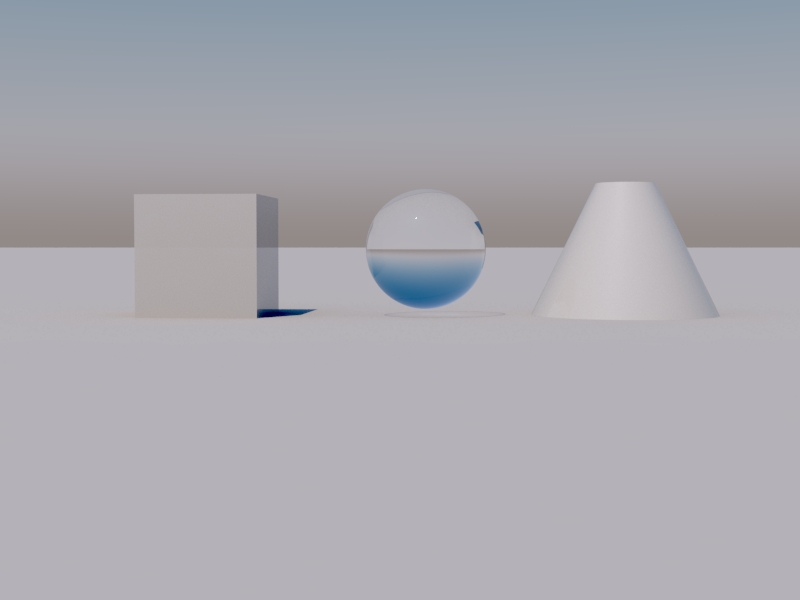
5. Restore the GI (skylight) color back to black at intensity
1 for slighlty higher contrast.

6.
Modify the sun position manually by selecting the sun directly from the
model space and then going to the properties tab on the right hand side
select the "Change Sun Angle" option .

That is, set the sunlight for
morning, mid-day and late afternoon, and re-render accordingly:
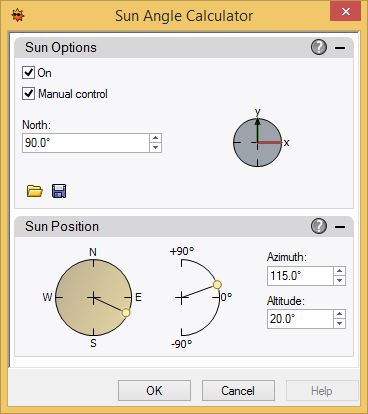 |
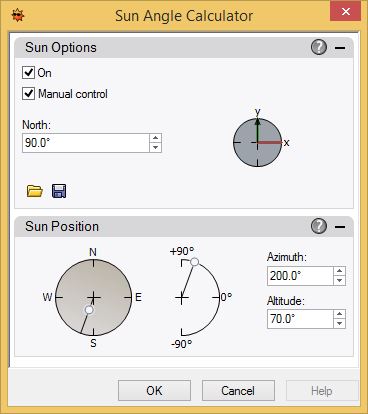 |
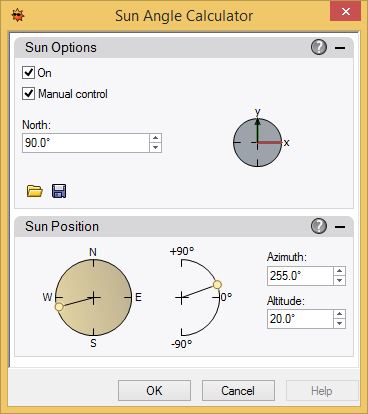 |
| morning |
mid-day |
late
afternoon |
Morning rendering with color adjusted via the "Color corrections"
dialog box:
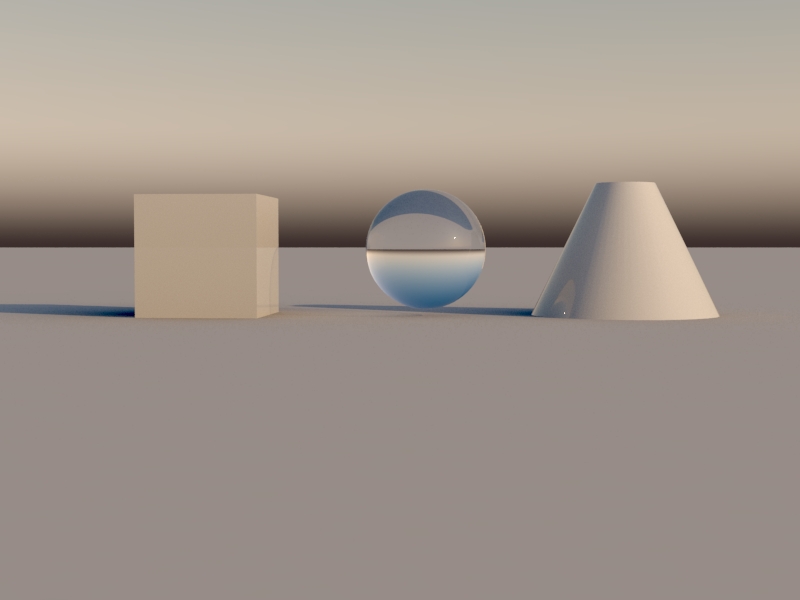
Mid-day rendeing with
color adjusted via the "Color corrections" dialog box:

Late afternoon rendering with color adjusted via the
"Color corrections" dialog box:
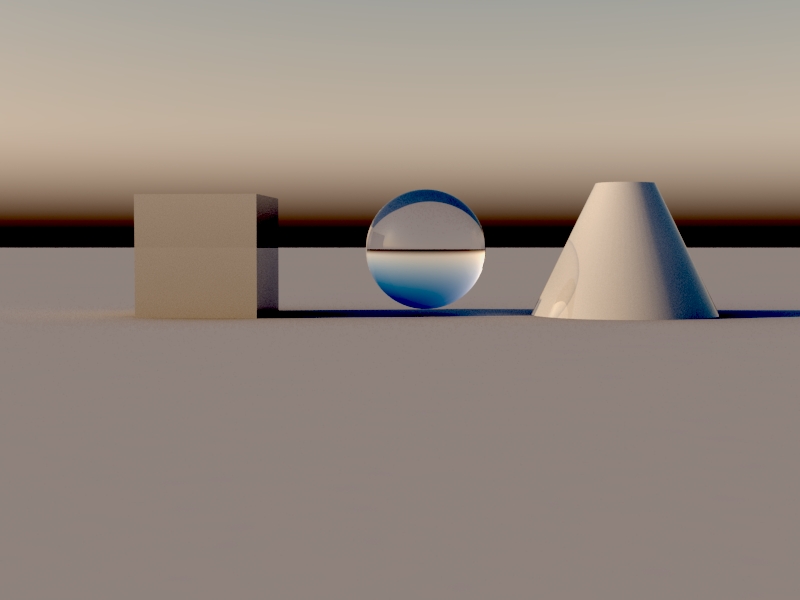
7. Adjust the sunlight to approximate early afternoon.

8. Return to the CIE Sky, and change the turbidity to values of
2, 5 and 8 and also rendering in turn for each value
respectively:
Turbidity = 2.0:
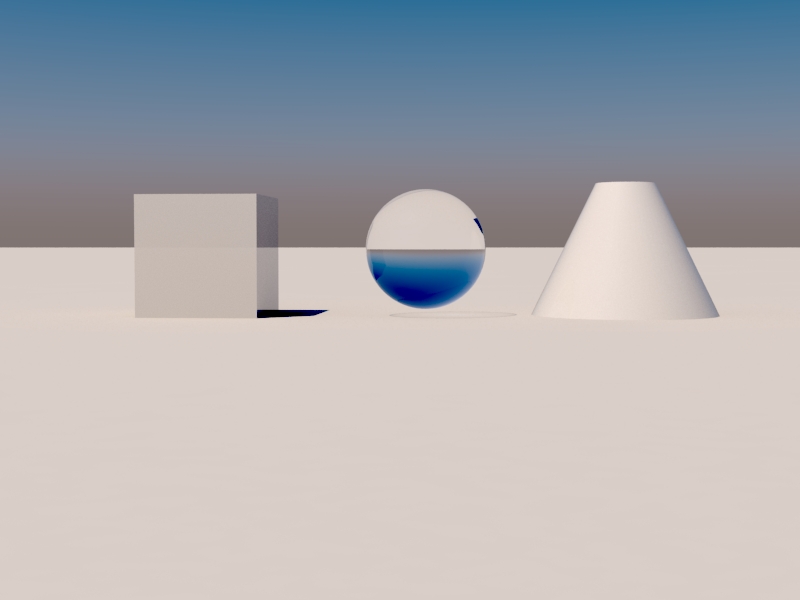
Turbidity = 4.0:
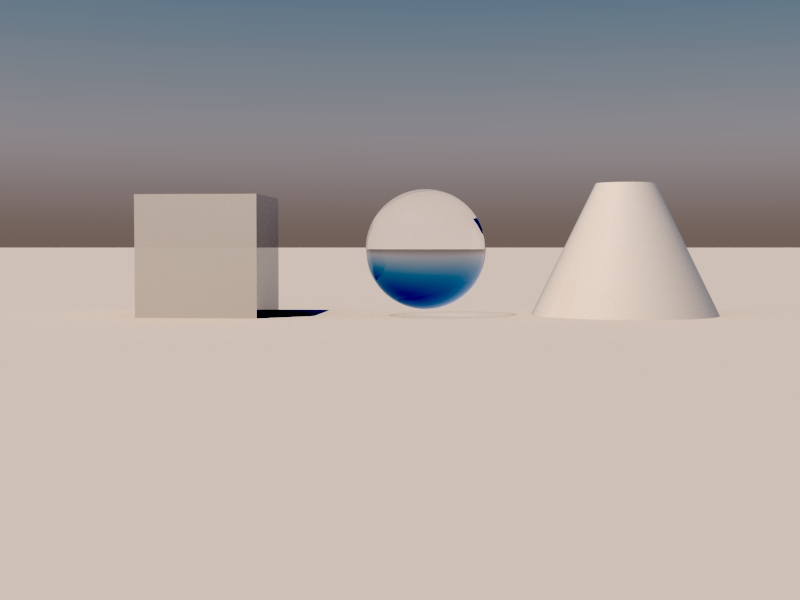
Turbidity = 8.0:
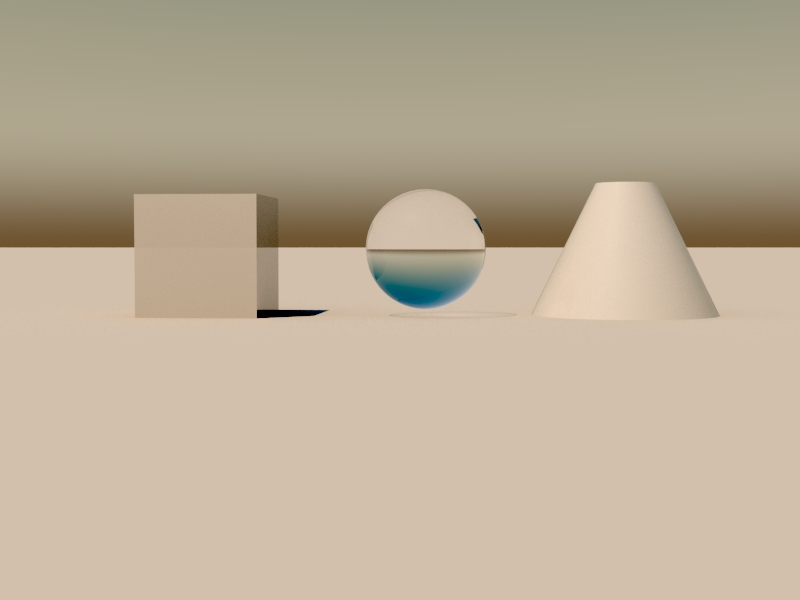
Part III: Viewing the
Sun.
1. Return to the V-Ray Asset Editor,, Select the Light Iconr, and reset
the "Sun Light " size to 7.0. Note that this more direclty
accesses the same properties for "Background", "GI(Skylight)" and
"Reflection" skies
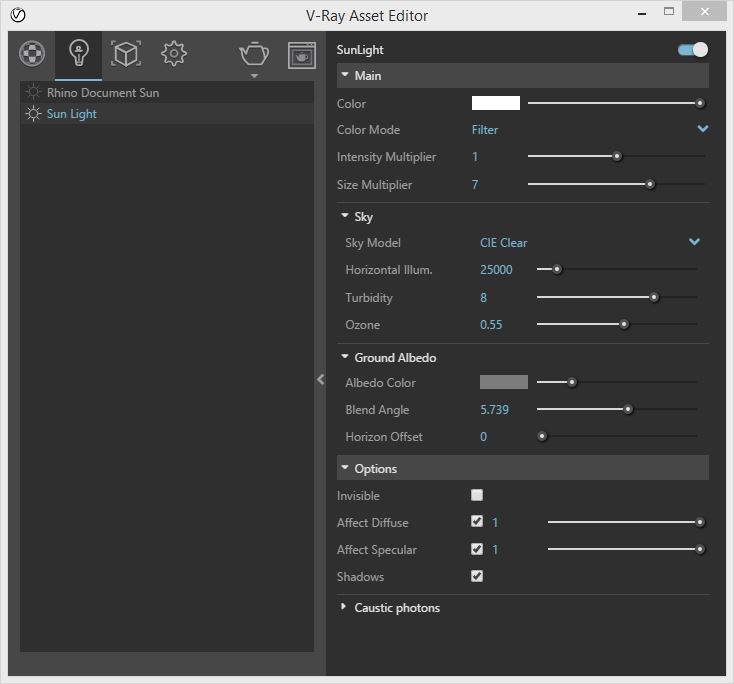
2. Change
the Sun Azimuth to 220 and the Altitude to 20, and rotate the view so
as to look in the approximate direction of the Sun, and render. This
may take a number of trial renderings to pinpoint the location of the
sunin the perspective view. Right-click on the view name "Perspective"
in the upper-half hand corner fo the view, hold down the right-mouse
button continuously and select the "Set Camera/Adjust Lens Length and
Dolly" tool to adjust the view. Use this tool in combination with with
the "Pan" tool to help find the appropriate adjustment of the view so
the the sun will be visible within it.
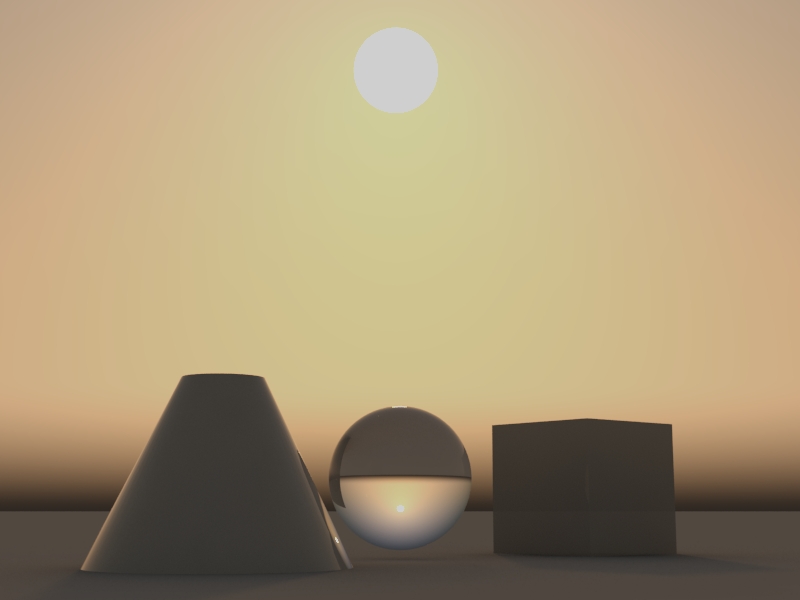
3. Restore the Turbidity to 2.0 and re-render the same view.

Part V: HDR Environmental Sky
Select an HDR ski from the classes\ARCH2710-Mark-FAL2020\examples\HDRSampleSkies, or download
the entire folder, and place it in same folder as your Rhino
3dm file. A number of copyright free HDR skies are available
on web sites for a fee and some are available without charge. These
examples were obtained from the web site http://http://www.cgskies.com/
and subject to terms of restricted use for educational purposes. See
the
cgskies web site for copyright restrictions.
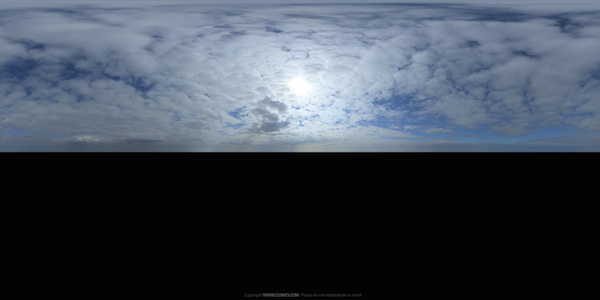
1.
Go Back to the "V-Ray Asset Editor" and switch off the Environmental
Overrides for "Background" , "GI(Skylight", "and "Refraction"
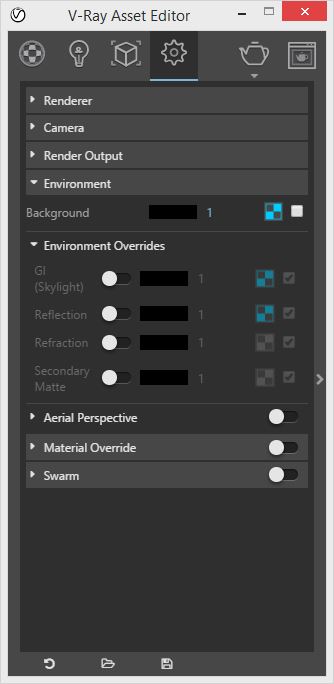
2. Select the V-Ray lights tab and select the "Dome" light as well

The "Dome" light is the fourth from the right-hand side:

Place the dome-light in the center of the model space and concurrently select the HDRI sky file. The dome light will orient the HDRI sky to the 3D model such that A rendering will produce the level of background illumination and lighting needed. However, the sky photo may include the sun itself. In this case, it may be necessary rotate the dome so that the sun is appropriately oriented to the model (e.g., placed along the negative y-axis).

Optionally, select "Open" to return to Rhino. Using the scale tool, adjust
the scale facor for the dome to a size that surrounds the model (500
was used in this case).
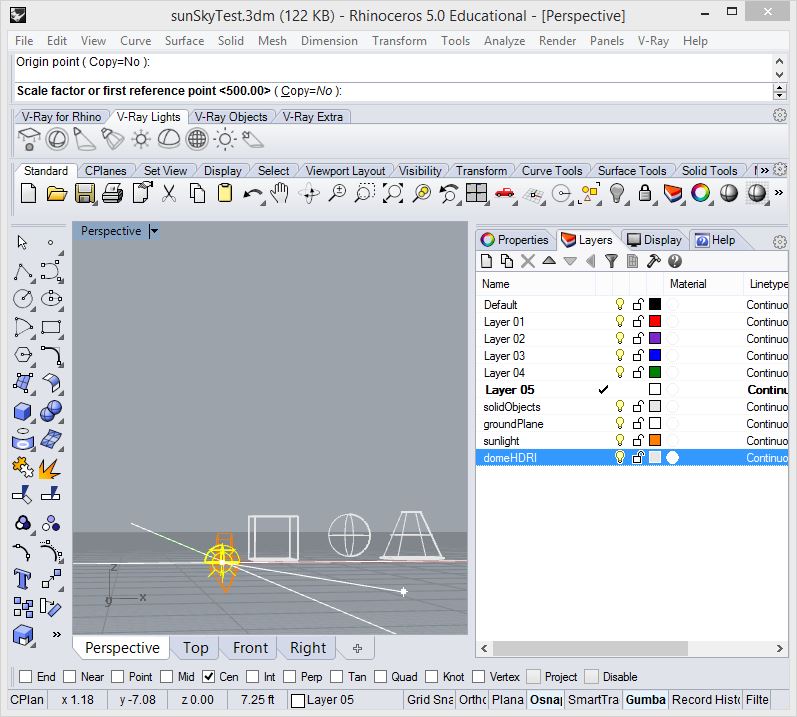
3. Within the "V-Ray Asset Editor" select the "Dome Light" and adjust the scalar value for intensity to 1000.
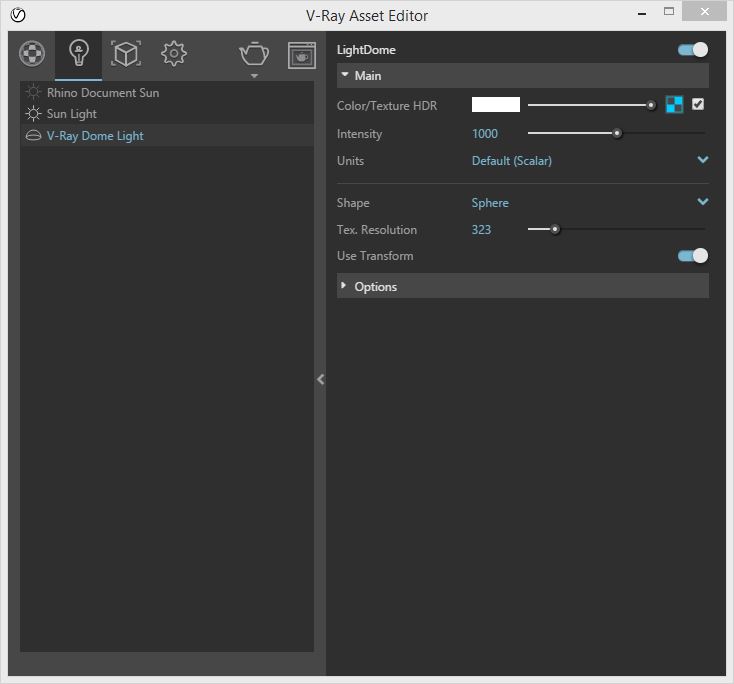
Note
that a more accurate approach is to specify the itensity in Lumens or
Watts which is one of the pull down options. under "Units".
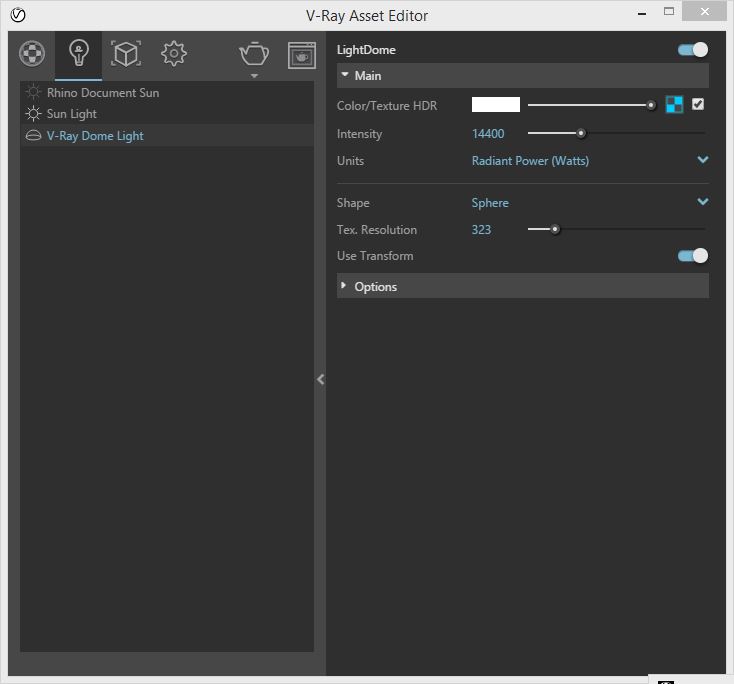
4.
Change perspective as appropriate to establish a greater
area of sky within the view, re-render, post-processing the
result through the" Color corrections" dialog box as needed
to obtain the appropriate exposure. See below renderings at 1000 scalar
(center) and 14400 watts (right) with light levels adjusted in
rendering.

























